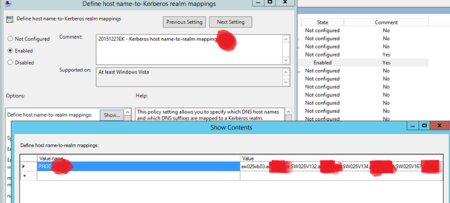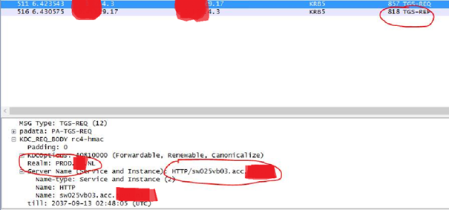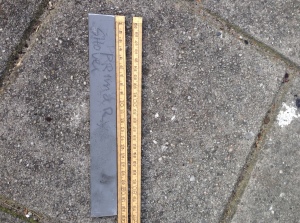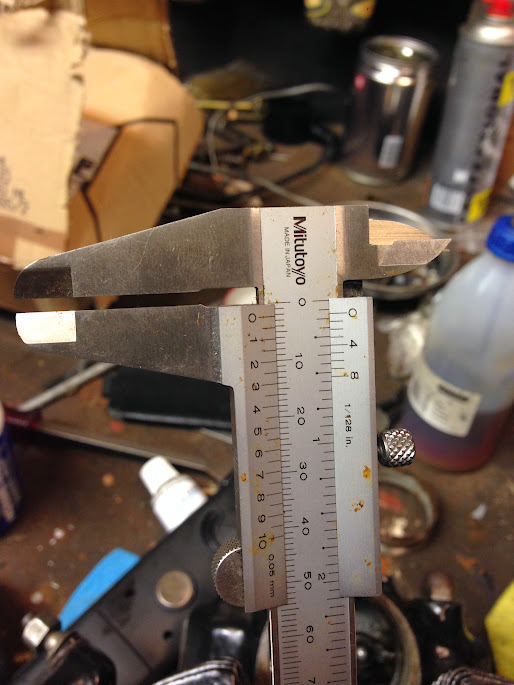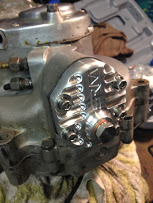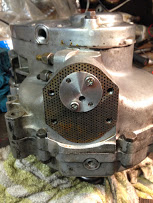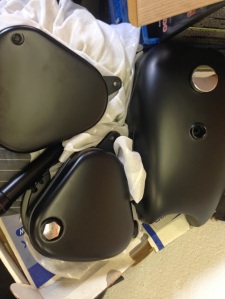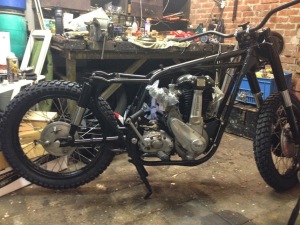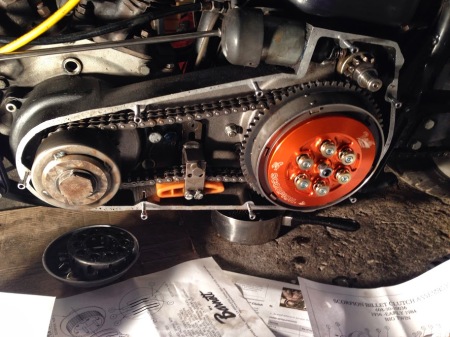…in Schotland
Sinds ik zo’n jaar of 7 geleden ben begonnen met het drinken van whisky kriebelde het geregeld om zelf eens naar Schotland te gaan om de plaatsen en de mensen te bezoeken die dit prachtige gerstenat distilleren. Onlangs kwam een goede collega, Maarten, met het briljante voorstel om met een groepje ons mooie buureiland te gaan bezoeken. Maarten is zelf ook fervent whiskyliefhebber, en vreemd genoeg zijn er de laatste paar jaar behoorlijk veel van mijn collega’s ook whiskyliefhebber geworden. (e.e.a. zou iets te maken kunnen hebben met de proefmonsters die ik zo nu en dan meeneem naar kantoor 😉 ).
Na een korte mailwisseling hadden wel al snel 7 of 8 liefhebbers, waarvan sommige geen toestemming kregen van de vrouw en een ander rond de geplande datum vader zou worden. Uiteindelijk bleven er 5 mensen over, en dus vertrokken Maarten, Karel, Erwin, Matthijs en ik op 6 juni jongstleden naar Schiphol om van daar uit met vlucht KL1445 naar Aberdeen te vertrekken voor ons eerste bezoek aan whiskyland Schotland!
Vanaf Aberdeen vertrokken we in onze gehuurde BMW X5 naar Lossiemouth, een klein plaatsje dat vroeger de haven van het nabij gelegen Elgin was. In Lossiemouth had Maarten 2 kamers geboekt in het Stotfield Hotel. Nu hoor ik jullie denken, “5 man, 2 kamers? hmm…” Inderdaad, gelukkig had ik oordoppen mee 😉 Maar eerst moest er gegeten en gedronken worden (dat eerste iets meer dan het tweede), en dat is naast whisky iets wat ze in Groot Brittanie ook heel best kunnen: Bier brouwen!! En zonder schuimkraag, dus meer bier!
Op donderdag ochtend verlieten we het Stotfield Hotel en gingen op zoek naar de eerste pagode‘s, want waar een pagode is, is een distillery. De eerste distillery die we hebben bezichtigd was Speyburn. Helaas alleen van de buitenkant, want Speyburn is niet open voor bezoekers. Vanaf Speyburn in het plaatsje Rothes reden we oostwaarts langs de Auchroisk Distillery naar Keith, want ik had gelezen dat daar 1 van de oudste en mooiste distilleries van Speyside staat.
Strathisla
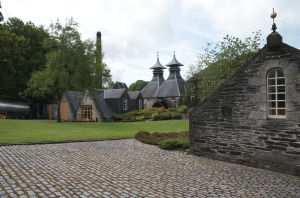
Strathisla Distillery
Strathisla is opgericht in 1786, althans toen kregen ze een vergunning, ze stookten al lang daarvoor whisky! De distillery is tegenwoordig eigendom van Chivas Brothers (welke op hun beurt weer onderdeel zijn van Pernod Ricard) en is tevens de belangrijkste single malt voor hun Chivas Regal blends. Slechts een paar procent van de totale hoeveelheid whisky wordt als single malt gebotteld, de rest gaat in de blend. (Wat overigens een erg fijne blend is!) Na een interessante tour van de distillery door een oudere, moeilijk verstaanbare Schotse man reden we naar Glenfiddich met een tussenstop bij Balvenie Castle.

Balvenie Castle
Onze tour bij Glenfiddich begon pas om 15:00 uur, dus we hadden eerst wat tijd te doden. Dit deden we onder het genot van een stevige lunch en een paar ‘pints’ Tennent’s Lager in de plaats Aberlour aan de rivier de Spey. Deze plaats is overigens ook de thuisbasis van Aberlour Single Malt!

Glenfiddich Distillery en Pagode
De tour bij Glenfiddich was erg indrukwekkend, waar Strathisla beschikt over 2 wash stills en 2 spirit stills, heeft Glenfiddich 8 wash stills of Low Wine stills en 5 spirit stills!
Nog even een korte uitleg over het productieproces van whisky. De gerst wordt eerst geweekt in warm water zodat de gerst begint te ontkiemen. Hierdoor worden de nodige aminozuren geactiveerd die later de zetmeel moeten omzetten in suikers. Vervolgens wordt dit proces gestopt door de gerst op een moutvloer te laten drogen, deze moutvloer wordt van onderen verwarmd. Traditioneel gebeurde dit met een kiln (oven) waarin een turfvuur werd gestookt. Tegenwoordig wordt veelal hete lucht gebruikt voor het droogproces. Vervolgens wordt de gemoute gerst gemalen tot een grof soort muesli, genaamd grist.
De grist gaat in een grote mash tun waar er heet water aan wordt toegevoegd. Dit gebeurt 3 a 4x met water van verschillende temperaturen oplopend van ca 63 tot 95 graden celcius. Tijdens dit proces worden de zetmelen in de gerstekorrels omgezet in suikers die we nodig hebben om alcohol te maken. Het resultaat noemen we wort. Het wort wordt overgepompt naar de washbacks waar gist wordt toegevoegd. Tijdens het gisten worden de suikers omgezet in alcohol en CO2. Aan het einde van dit gistings process hebben we een soort bier van 8% alcohol waarmee we gaan distilleren, want 8% is natuurlijk niet genoeg!
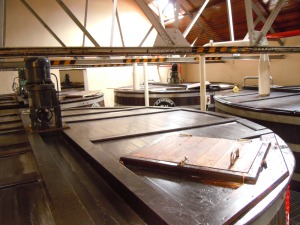
Glenfiddich washbacks
Het alcoholhoudende wort wordt naar de wash/low wine still’s gepompt voor de eerste distillatie. Bij distillatie wordt gebruik gemaakt van het verschil in kookpunt tussen water en de verschillende soorten alcohol. Water kookt pas bij 100% celcius, maar alcohol begint al rond de 65% te verdampen. Overigens is dat niet de alcohol die we willen, pas rond de 78 graden begint de ethanol te verdampen, daarvoor krijgen we voornamelijk methanol wat niet zo gezond schijnt te zijn. Het eerste deel (head) van het distillaat wordt dan ook naar een speciaal vat gebracht om later opnieuw te worden gedistilleerd. Vanaf zo’n 78 graden begint ‘the good stuff’ (heart) uit de still te vloeien, dit noemen we low wine en heeft een alcohol percentage van rond de 20%. Het laatste deel van de distillatie (tail) voldoet ook niet aan onze eisen en wordt samen met het eerste deel opnieuw gedistilleerd. De middenloop gaat naar de spirit still waar het een 2de keer wordt gedistilleerd. Aan het einde van de 2de distillatie hebben we een ‘spirit’ met een percentage ergens tussen de 65 en 70% alcohol. Dit wordt verdund tot ongeveer 64% en op eikenhouten vaten overgebracht om tenminste 3 jaar te rijpen. Bijna alle kleur, geur en smaak komt van de rijping. Rijping geschiedt op verschillende soorten vaten, vaak worden ex-Bourbon vaten gebruikt, maar ook vaak sherry of port vaten. Bourbon vaten zorgen voor o.a. vanille tonen waar sherry vaten voor meer rijpe fruit tonen en caramel zorgen.
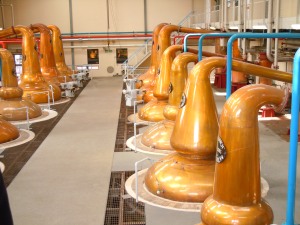
Glenfiddich Stillroom
Uiteraard was er na afloop van de rondleiding nog een Glenfiddich Nosing & Tasting, waarin we respectievelijk de 12 y.o., 15 y.o. Solera Reserve, 18 y.o. en 21 y.o. hebben geproefd. Voor mij was de Glenfiddich 18 y.o. absoluut de winnaar met mooie aroma’s van gedroogd fruit, noten, caramel en honing.
We zouden overnachten in een B&B in Fort Augustus nabij Loch Ness, echter hier was de boeking niet doorgekomen en ze hadden dan ook geen plaats voor 5 kerels in een BMW X5. Terug in het dorp vonden we gelukkig een zeer goedkoop youth hostel en uiteraard een pub voor de nodige pints en drams!
Vrijdag ochtend stonden we vroeg op om onze reis voort te zetten naar Isle of Skye en Talisker!
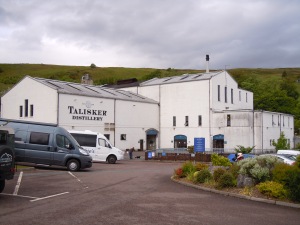
Talisker Distillery, Isle of Skye
Eindelijk turfrook en maritieme invloeden! Begrijp me goed, die Speyside whisky’s met delicate zachte vanille, honing en fruit aroma’s zijn prachtig, maar aan het einde van de dag verlang ik dan toch weer naar een zware rokerige whisky en daarvoor zijn we bij Talisker aan het juiste adres! Ivm met een aanhoudende droogte op Skye werd er momenteel niet gedistilleerd (te weinig water), maar desondanks kregen we toch weer een interessante tour en tasting!
Die middag hadden we een flinke klim op het agenda staan in het prachtige berglandschap van Skye. De ruim 3 uur durende wandeling was een ware hel voor IT-nerds als ons, maar absoluut de moeite waard!

5 idiots walking in the mountains of Isle of Skye
Zaterdag hebben we tot slot nog een bezoek gebracht aan Dalwhinnie in de Hooglanden op onze lange weg terug richting de oost kust.
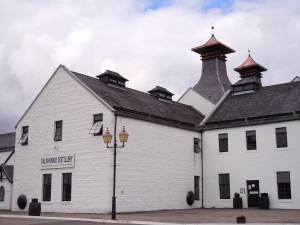
Dalwhinnie Distillery
Oh ja, zondag morgen op weg terug naar Aberdeen airport ook nog ff een kasteeltje meegepikt…
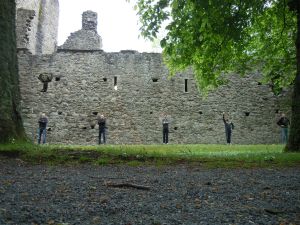
The 5 knights (idiots) of Huntly Castle
Een kort, maar geweldig bezoek aan whiskyland Schotland! Ik von’t mooi!
Enrico Klein



 Posted by Enrico Klein
Posted by Enrico Klein 



